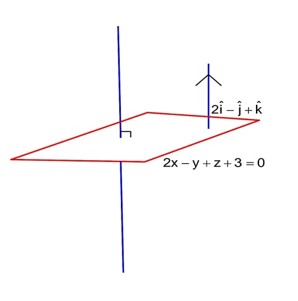Three Dimensional Geometry
Get insights from 212 questions on Three Dimensional Geometry, answered by students, alumni, and experts. You may also ask and answer any question you like about Three Dimensional Geometry
Follow Ask QuestionQuestions
Discussions
Active Users
Followers
New answer posted
3 months agoContributor-Level 10
Normal vector to the given plane be
Equation of line QS :
So let P
Now P lies on given plane so
So, S (-3, 5, 2)
also given R lies on given plane so
6 – 5 +
So, R (3, 5, -4)
SR2 = 72
New answer posted
3 months agoContributor-Level 10
Required equation of plane will be (x – y – z – 1) +
Given
So plane be 4x – y – 5z + 2 = 0 for
New answer posted
3 months agoContributor-Level 10
Equation of line PQ :
So, let Q (2k + 1, 3k – 2, -6k + 3) Q lies on given plane so
2k + 1 – 3k + 2 – 6k + 3 = 5
So,
Now required distance = PQ =
New answer posted
3 months agoContributor-Level 10
Equation of the plane will be
->
(i) is parallel to x-axis so its d.r.s will be (1, 0, 0)
->
Hence required equation will be
New answer posted
3 months agoContributor-Level 10
the normal to required plane is
Equation of plane 1(x + 1) – 2(y – 1) + (z – 3) = 0
x – 2y + z = 0
P (7, -2, 13)
New answer posted
3 months agoContributor-Level 10
Equation of required plane
it passes (1, 2, 3)
Equation of plane
(4, 2, 2) not satisfying the plane
Taking an Exam? Selecting a College?
Get authentic answers from experts, students and alumni that you won't find anywhere else
Sign Up on ShikshaOn Shiksha, get access to
- 65k Colleges
- 1.2k Exams
- 679k Reviews
- 1800k Answers

